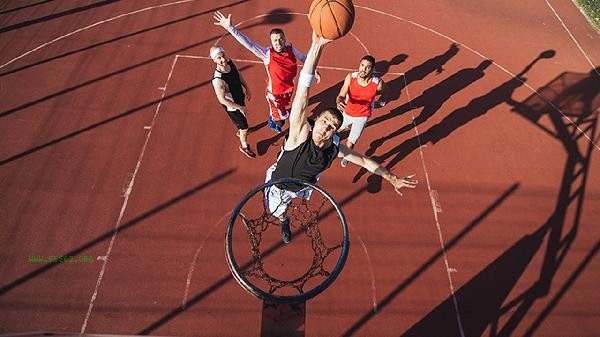Basketball has benefits for the body such as enhancing cardiovascular function and promoting bone development, but it may also pose risks such as joint injuries and muscle strains. Basketball, as a whole-body exercise, has the main benefits of improving coordination, burning calories, and improving metabolism. The potential risks are often related to exercise intensity or insufficient protection.

1. Improving cardiorespiratory endurance
The rapid transition between offense and defense in basketball can significantly enhance cardiorespiratory function. Continuous running and jumping can increase maximum oxygen uptake, and long-term persistence can help reduce resting heart rate. Accelerating blood circulation during exercise has a positive effect on preventing cardiovascular disease, but hypertensive patients need to control the intensity of resistance.
2. Strengthening Skeletal Muscles
Jumping movements stimulate bone calcium deposition, which is particularly beneficial for adolescent bone development. Emergency stop and directional changes can enhance the strength of lower limb muscle groups, but the knee and ankle joints bear greater impact, and overweight individuals may exacerbate cartilage wear.
III. Improving Metabolic Levels
The high-intensity intermittent exercise characteristics make basketball have a good fat loss effect, and a single game can burn a lot of calories. Excessive oxygen consumption after exercise can continuously increase basal metabolic rate, but people with large fluctuations in blood sugar should pay attention to preventing hypoglycemia.

Fourth, Potential Sports Injuries
Ankle sprains and finger contusions are common acute injuries, often caused by unstable landing or improper ball grabbing movements. Long term heavy exercise may cause chronic strain such as patellar tendinitis. It is recommended to warm up thoroughly before and after exercise and use protective gear.
V. psychological and Social Effects
Team cooperation can cultivate collaboration skills and relieve stress, but competitive confrontation may trigger emotional fluctuations. Teenagers should pay attention to avoiding anxiety caused by excessive pursuit of victory or defeat, and it is recommended to use moderate intensity 3-4 times a week. When playing basketball, professional sports shoes with anti slip and shock-absorbing properties should be selected, and wooden floors or plastic materials should be given priority on the court. Perform 15 minutes of dynamic and static stretching before and after exercise, with a focus on moving the ankle and knee joints. Pay attention to supplementing high-quality protein and calcium in diet, and timely replenish electrolytes after exercise. Middle aged and elderly people can reduce the intensity of confrontation and switch to shooting training. For those with a large weight base, it is recommended to first lose weight through low impact exercises such as swimming before participating. If there is persistent joint pain or swelling, seek medical attention and examination in a timely manner.







Comments (0)
Leave a Comment
No comments yet
Be the first to share your thoughts!